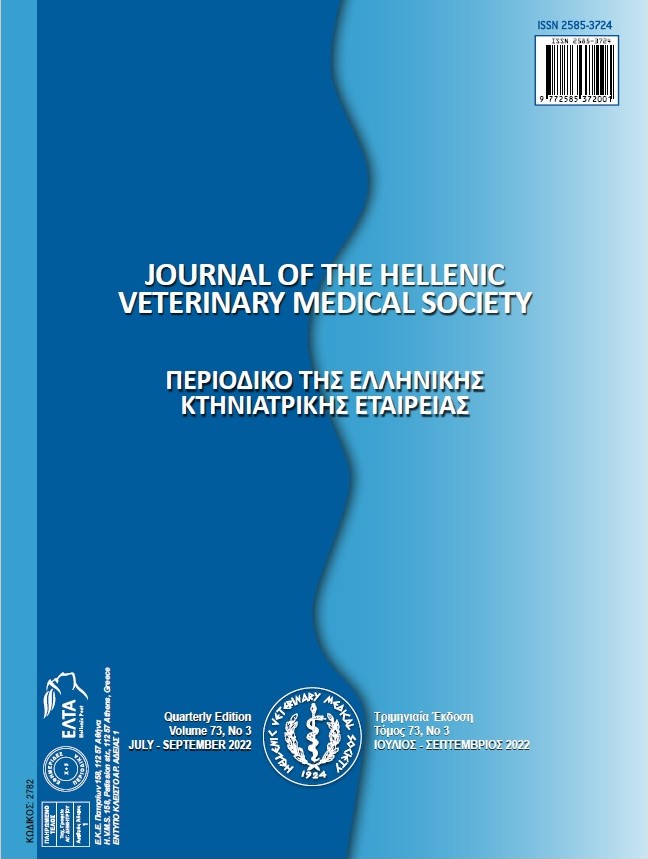The effects of adding molasses and inoculant to silages of fodder pea and rye grass in different proportions on silage quality
Аннотация
The aim of this study was to determine the effects of adding melas and microbial inoculant to the mixed silages of different proportions fodder pea (FP) and rye grass (RG) grown in arid conditions on silage quality and in vitro digestibility. For this purpose, silages containing fodder pea and rye grass at 20, 40, 60 and 80% ratios were prepared in jars with additives 5% molasses and 10 g/t inoculant (1.25×1011 CFU/g) and waited 60 days. At the end of the study, among groups was determined a significant difference in the pH value, lactic acid (LA), acetic acid (AA) and ammonia-N levels of the mixed silages (p<0,05). It was determined that inoculant was effective on LA level (p<0,05). Mixture level x additive interaction was observed at pH value, LA, and ammonia-N levels (p<0.05). In vitro digestibility, energy values, and nutrient contents of silages showed significantly change among groups (p<0.05). While molasses significantly increased the dry matter levels, it decreased the acid detergent fiber (ADF) level (p<0.05). Mixture level x additive interaction was observed at only neutral detergent fiber (NDF) level (p<0.05). While the structure was positively affected in silages containing 80% FP, the Flieg score decreased in silages containing 60% FP (p<0.05). With addition of molasses increased the Flieg score of silages, and it had mixture level x additive interaction (p<0.05). As a result, although mix silages containing 80% FP had high ammonia-N, excellent fermentation was observed with low pH value and high LA level. In addition, although NDF and ADF levels increased, mix silages with FP at 80% levels have higher in vitro digestibility and energy levels. Each of additives had a positive effect on silages, but molasses was determined to be more effective.
Article Details
- Как цитировать
-
Şen, G., Evci, Ş, Kara, K., Kara, K., & Erol, T. (2024). The effects of adding molasses and inoculant to silages of fodder pea and rye grass in different proportions on silage quality. Journal of the Hellenic Veterinary Medical Society, 75(1), 6887–6896. https://doi.org/10.12681/jhvms.33127
- Выпуск
- Том 75 № 1 (2024)
- Раздел
- Research Articles

Это произведение доступно по лицензии Creative Commons «Attribution-NonCommercial» («Атрибуция — Некоммерческое использование») 4.0 Всемирная.
Authors who publish with this journal agree to the following terms:
· Authors retain copyright and grant the journal right of first publication with the work simultaneously licensed under a Creative Commons Attribution Non-Commercial License that allows others to share the work with an acknowledgement of the work's authorship and initial publication in this journal.
· Authors are able to enter into separate, additional contractual arrangements for the non-exclusive distribution of the journal's published version of the work (e.g. post it to an institutional repository or publish it in a book), with an acknowledgement of its initial publication in this journal.
· Authors are permitted and encouraged to post their work online (preferably in institutional repositories or on their website) prior to and during the submission process, as it can lead to productive exchanges, as well as earlier and greater citation of published work.





